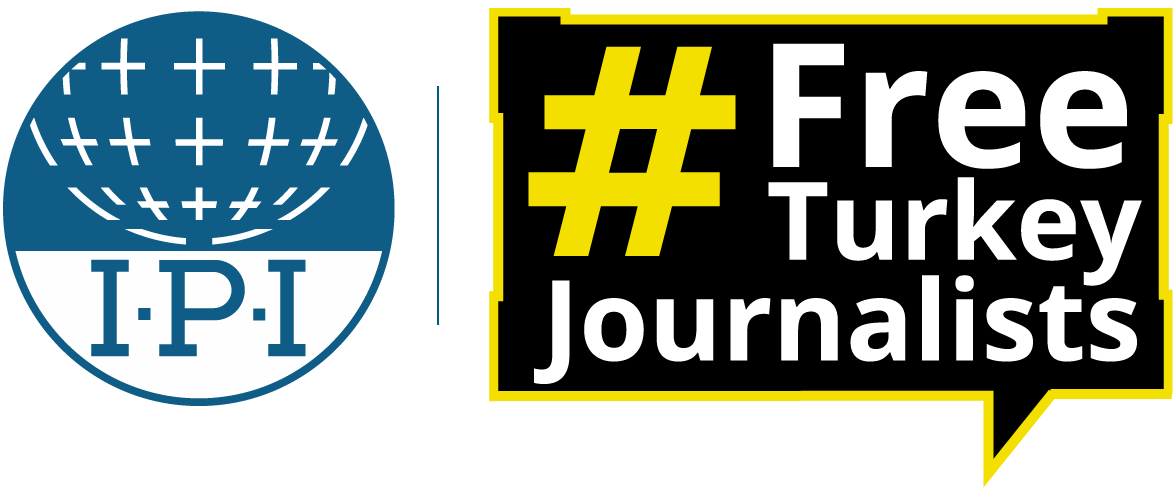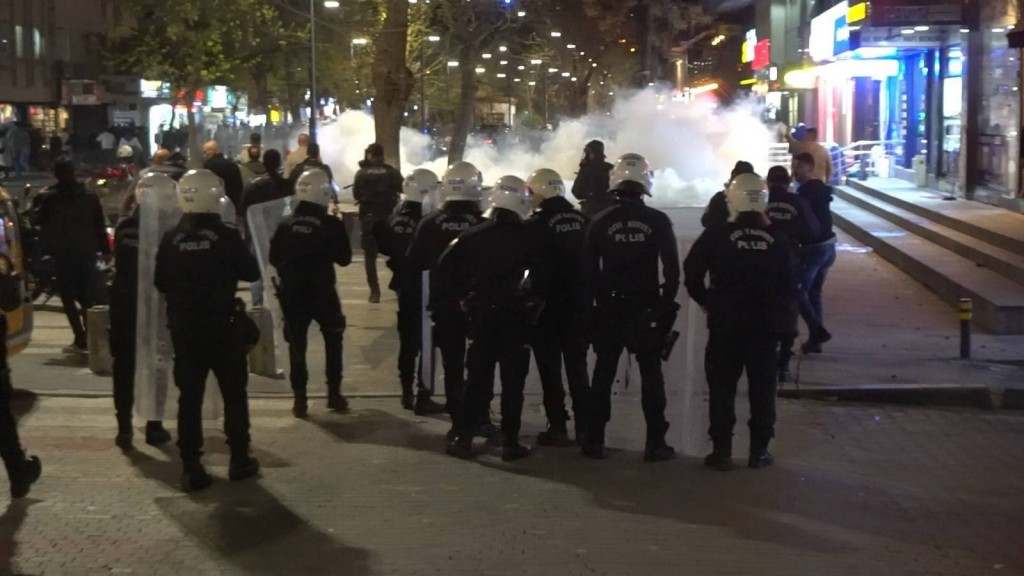The increase in the use of social media on a global scale continues to change and transform our relationship with the news. While local, national, and international news organizations continue to operate into new social media platforms/tools gradually, journalists at the same time are building different news flows for their audiences through their own social media accounts that are independent from their news outlets. Amid all this change, the increase in the interaction of social media users with the news allocates a digital environment where online lynching, insults, threats and harassment also increase.
Online harassment and violence, especially against women journalists, is becoming easier by degrees just as the access to news stories and the journalists who cover it, and remains at the forefront as one of the biggest threats to press freedom.
According to a survey conducted with more than 1,000 women journalists in 15 countries by the International Center for Journalists (ICFJ) and the University of Sheffield at the end of 2022, nearly three-quarters of women journalists have experienced online violence as a result of their journalistic work. While 48% of the surveyed journalists reported being harassed via messages on social media platforms, 20% of journalists who experienced online harassment said they were also physically attacked and/or abused in the real world due to online harassment targeting them.
The situation is not much different in Turkey. In a recent survey conducted by the Media and Law Studies Association (MLSA), 72% of female journalists reported having been subjected to online violence. The leading category of perpetrators of online violence was reported to be “anonymous accounts” with 35.4%, followed by “troll accounts” with 19.8% and “politically affiliated groups” with 19.8%.
A key actor in the face of online harassment: News organizations
While the media environment in Turkey has become increasingly diverse and dispersed – with many prominent journalists launching their own individual channels on social media due to widespread media capture in the country – the number of news organizations, especially digital ones, continue to grow. They therefore remain crucial actors when it comes to online harassment against journalists.
This article will examine the role of news organizations in Turkey in protecting journalists from online harassment and its impact on journalists’ well being.
Words from news organizations
Nurcan Gökdemir, Ankara Representative and News Director of BirGün newspaper, says that the approach in Turkey that is based on pushing women out of social life has a negative impact on women working in the media field, and that the “impunity policies” that prevail throughout the country also encourage harassment and threats against women journalists:
“Unfortunately, it is not possible to say that the issue of taking deterrent or protective measures against online harassment and threats against women journalists is yet on the agenda of news organizations in Turkey. Aside from external attacks, the fact remains that women in the media are marginalized in many institutions, their development is hindered, they are not paid the wages they deserve, and they are the prior group that comes to mind in layoffs.”

Nurcan Gökdemir
Emphasizing that unlike their male colleagues, the reactions and negative comments against women journalists on social media are directed towards their sexual identity and physical appearance, Gökdemir states that threats are mostly sexual in nature and continues,
“As I mentioned at the beginning, it is not possible at this stage to answer whether the steps taken are sufficient or not because no steps have been taken in my view. First of all, this situation needs to be put on the agenda, news organizations need to clearly declare that they are aware of this circumstance and that they will take all legal steps to punish those responsible”.
Mezopotamia Agency (MA) Managing Editor Diren Yurtsever, who stated that she herself has been subjected to death threats, racist rhetoric and sexist insults on social media, said that she and other women journalists at the MA are frequently subjected to online harassment and threats:
“Not only was I subjected to lynching, but I was also subjected to insult, racist threats and sexist discourse in the messages I received. This is only a small part of what I went through; other women working as journalists at MA, which reports on rights violations against women, are also subjected to various harassment and threats. We try to provide all kinds of assistance in such cases, from the legal process to psychological support. In the cases we detect, we first file a criminal complaint against the accounts or people in question through our lawyers.”

Diren Yurtsever
Yurtsever says that in a period of increasing pressure and harassment against Kurdish media, MA is trying to provide all kinds of support to women journalists working for the organization:
“We apply to rights organizations such as the Human Rights Association (IHD). Through the Dicle Fırat Journalists Association (DGFD), of which we are a member and take part in the board of directors, we can provide psychological support if needed. We also follow the legal process and make press statements in line with the demands of our colleagues and ensure that the issue is brought to the agenda in solidarity with other press organizations.”
Kaya Heyse, News Coordinator and Responsible Manager of Medyascope, a news organization operating in digital media, stated that they are making various preparations to cope with such an issues:
“We will launch a strategy dossier in the first months of 2024 that includes references to violence against women journalists, as well as LGBTI+ journalism and climate reporting, which has clear guidelines in this changing media and journalism environment.”

Kaya Heyse
Stating that they face lynching, insults and heavy threats under their social media posts, as is the case with almost all digital news organizations in Turkey, Heyse continues:
“Every organization should have a system that protects its employees against such incidents. This is a two-tier system. The first tier is the legal system. The second tier is psychological support. Practically, we are trying to provide all help mechanisms to our employees.”
Heyse also underlines that they have created a desk to monitor the comments and messages received on the news posts on social media, and that they are following feedback using various features of social media platforms, but that human resources are needed for this to be systematically beneficial.
Words from journalists
Veteran journalist Hale Gönültaş is one the journalists who have recently been the target of online harassment and threats for her journalistic work. In August, Gönültaş was targeted on social media by members of an Islamic group – Tevhid, for her news story on a young woman who was revealed to be in connections with ISIS and Tevhid. Her criminal complaint to the prosecutor’s office about the incident resulted in a decision of non-prosecution.
Gönültaş states that in cases of threats and harassment against journalists, the judiciary follows the same attitude with the mainstream media:
“The independent media sources write what the mainstream media cannot/will not write due to the control of the government. Therefore, when a journalist publicizes what is not wanted to be seen in the independent media and faces threats and harassment in return, it is not on the agenda of the mainstream media. Only independent media and some journalist associations raise their voices and react.”

Hale Gönültaş
Gönültaş notes that no institutional response mechanism has yet been developed in the face of threats and harassment against journalists, and continues:
“The close ties between mainstream media and the government also applies to the judiciary. We can cite thousands of examples of the politicization of the judiciary. When journalists, who are threatened because of their reporting, file a criminal complaint, the result is usually in favor of the perpetrators.”
Suzan Demir, who has previously worked for different news organizations and currently works as a freelance journalist, is one of the journalists who has been the target of online harassment:
“I have been targeted because of my news reports and views. In this context, I have been threatened through different social media platforms with racist and sexist discourse. While a significant number of my colleagues have stood up for me, I have not received any concrete support from either from news organizations or journalist organizations.” According to Demir, threats and harassment are commonplace and news organizations are part of this system.

Suzan Demir
Noting that women journalists are mostly targeted directly with their personality and characteristics because this is perceived as more frightening for journalists, Demir continues her words,
“We see that news organizations provide psychological support to journalists in cases of conflict and natural disasters such as earthquakes, but we don’t see this in other incidents such as online violence and threats. I think news organizations first need to overcome some ideological barriers to protect journalists. They need to take attacks on social media at least as seriously as journalists, but there is also the situation that sometimes, even we as journalists, do not take these harassment and threats seriously. But either way, journalists need to be protected by their organizations first.”
“Turkey ranked first worldwide in online troll campaigns in the first half of 2023”
Damla Tarhan Durmuş, Operations Manager at the Coalition for Women in Journalism (CFWIJ) answered IPI’s questions on online violence against journalists.
Drawing attention to the increase in organized online troll campaigns in Turkey, particularly since 2021, Durmuş said:
“Accounts that used to directly threaten women journalists have now started to do so frankly and simultaneously. These troll campaigns have led to women journalists being targeted in real life as well. In fact, citizens who were not satisfied with the news they saw were emboldened as they saw these messages echoing on social media platforms, and it became normalized to publicly target journalists in this way.”
Underlining that Turkey ranked second in the world in online troll campaigns in the first half of 2022 and first in the first half of 2023, Durmuş emphasizes that especially in the last two years, this type of violence has started to change its shape and become much more dangerous, and that it has come to a situation where women journalists and the news organizations they work with need to develop different defense mechanisms.

Damla Tarhan Durmuş
“Unfortunately, we do not see that news organizations have concrete work on online harassment/violence in Turkey. They do not realize how important and necessary it is to at least provide psychological support. Moreover, in the last two years, we have seen that journalists in many organizations have gone on strike for the most basic working conditions and rights. Therefore, journalists do not expect more from organizations that cannot even provide the wages and conditions they deserve. In fact, we can say that what news organizations do is to make journalists accept the lesser of two evils. Unfortunately, Turkey as a country, has become a place where even the most basic services such as psychological and legal support are considered a luxury service. And at this point, we see that professional organizations and non-governmental organizations work more actively than news organizations.”
Pointing out that there are three different steps that news organizations can take in the face of online harassment/violence against women journalists, Tarhan explains them as follows,
“First of all, it is very important that news organizations make a statement in cases of online violence against their employees and say that they stand behind their journalists. Moreover, in our country, women journalists cannot even go to their directors and tell them that they have been subjected to online violence. The second step that can be taken is for news organizations to provide psychological support to journalists. It is not easy for journalists to protect their mental health when they are subjected to threats and harassment. Another step is to provide training to journalists to protect them from online attacks. It is very crucial to explain – what journalists should do against possible attacks, what can be done to protect their personal data, what are the steps to be taken to protect their accounts and to overcome these attacks with minimal damage – and to provide training in this direction.”

Differences between freelancing and working for an organization
As in all working fields, the number of people working freelance without being affiliated to an organization is increasing gradually in journalism. In addition to independent journalists who create their own news channels or accounts, the number of journalists who create news for different sources but continue their careers as freelancers without a contract is on the rise. Just as journalists working as employees of various news organisations, freelance journalists working without a contract can be the direct targets of harassment, lynching and targeting on social media.
At this point, BirGün Ankara Representative Nurcan Gökdemir, whom we asked for her opinion on the differences between being a company employee and being a freelancer, believes that the fact that women journalists work for an organization or as freelancers makes a tangible difference in terms of harassment and threats. Stating that journalists working for an organization have different opportunities to react to such incidents and to hold them to account, Gökdemir underlines that freelance women journalists are more vulnerable in this regard.
On the contrary, journalist Hale Gönültaş expresses that working as a freelancer or for a news organization does not reveal any distinction or difference in terms of threats and harassment.
“When you work freelance, you receive the support of various professional organizations along with the organization you are affiliated with and the other independent media organizations. This is valid, at least in my experience” Gönültaş says.
Damla Tarhan Durmuş from CFWIJ also says that journalists who contacted CFWIJ confirmed that there is a difference between working for an organization and freelancing:
“At some point, we can say that this makes a difference. We hear this especially from journalists. The journalists we spoke to find it safer to work for an organization that stands behind them in cases of violence. It is possible to say that freelance journalists and journalists working for local media organizations feel a little more vulnerable here. Because no matter where the violence comes from, the fact that journalists working in bigger working environments are more supported ensures that the attacks are stopped in a shorter time. In particular, the fact that international platforms support these journalists also relieves them psychologically.
At a time when the concept of news is increasingly digitized and news organizations continue to adapt their operations to the yields of digital media, online harassment and violence against women journalists remains one of the biggest obstacles for journalism. IPI calls on all news organizations in Turkey and all around the globe to be aware of online attacks, especially against women journalists, and to contribute to the maintenance of independent and quality journalism by properly protecting their employees against these attacks.
Some of IPI’s previous articles on online harassment/violence against women journalists in Turkey can be found below:
- Have we ended online harassment against journalists? (TR)
- IPI Interview: Online attacks targeting women journalists in Turkey (TR)
- IPI’s database on online abuse against journalists
- ‘Rampant sexism’ in attacks on Turkey’s women journalists
- IPI launches ‘Voices Against Online Harassment’ series
- Protocol for newsrooms to tackle online harassment (TR)
- IPI online course: Building an effective protocol for newsrooms to address online harassment
- Newsroom measures to address online harassment
- Online harassment against freelance journalists




